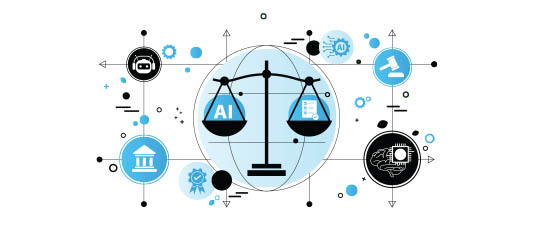Inclusion is nothing new for Tova Sherman.
It was, after all, her only option.
Sherman grew up in a home of seven — four siblings, a mother and a father — all of whom suffered from disabilities. Sherman herself is on the ADHD spectrum, which she says comes along with bouts of anxiety and depression. Sherman struggles with impulse control, the volume of her voice and being overly expressive with her hands. She was kicked out of high school. She’s been fired from many jobs.
Growing up in such an environment taught Sherman, a Canadian resident, the value of accommodation. It taught her to think of people in terms of “different, not difficult.” Different was normal in her home. Accommodation was essential.
Sherman, now in her late 50s, is a TED speaker with more than 25 years of experience promoting diversity and inclusion. She’s the CEO of reachAbility, an organization that provides supportive and accessible programs dedicated to workplace inclusion for anyone facing barriers.
“There’s an authenticity when you’re what I call a ‘first voice,’” Sherman said. “It’s someone living with it rather than a professional who has studied it. I’m actually both. That allows me a level of empathy because I was so badly bullied that, frankly, this whole career is probably just me licking my bully wounds. I not only think my disability has made me more relatable, but it also has given me a level of skill that I would never have had without this particular level of neurodiversity.”
Sherman’s job — much like many working so hard for equality for those with disabilities — is to remove myths in the modern global workplace and replace them with facts and tools to promote inclusion.
“The reality is most people, and most companies, want to be inclusive,” Sherman said. “The will is there. It’s the lack of tools. They have no clue. But again, where are they supposed to learn about this? Where do they teach about inclusion? Nowhere. There are only two ways to be truly inclusive: education and osmosis.”
Setting Barriers Aside
According to the U.S. Department of Labor, the labor force participation rate of disabled persons between 16 and 64 years of age was 33.2% in December 2020. That number is slightly down from 33.6% in 2019. The unemployment rate for disabled persons in that age range is 11.5%; for those without a disability, the number drops to 6.4%.
Krista Deguffroy, the director of inclusion at SEI and co-founder of the Neurodiversity@Work program, knows these numbers. Deguffroy and her organizations provide internship opportunities to those on the autism spectrum and attempt to close the gap within the financial industries for those interested in the field.
Deguffroy points to late 2020 and early 2021 as an opportunity to reimagine how and where people work. Some neurodivergent workers, or those showing conditions of ADHD, autism, dyspraxia and dyslexia, for example, expressed the desire to work remotely. She worked tirelessly to accommodate them.
“In 2020, we were able to explore [remote work] and look at productivity rates and in some cases say, ‘You know what? This person’s social anxiety has decreased but their productivity has increased,’” she said. “So, we’re able to meet the employees halfway, matching the employee’s needs with the company’s.”
Many believe education is the greatest barrier for the hiring of disabled people in the workplace. But, as Deguffroy contends, perhaps fear is even more impactful. Fear, as in, what happens if you make a mistake or use the wrong term? What if you unintentionally offend someone? Deguffroy believes people have good intentions and favor inclusion yet tend to drift toward those who look like them.
Deguffroy is determined to change this sentiment.
“We let people know that, when you come through our doors, you’re human first,” she said. “You’re going to make mistakes, so our leaders need to lead with humility. And if you’re in an SEI corporate position, you need to be able to admit when you’re wrong and figure out how to go forward. We can’t focus on the mistakes. We need to focus on acknowledging and rectifying the issue.”
Sykes Tech Academy, based in Costa Rica, works to train and certify employees of all capacities to be tech-support specialists for major U.S. brands. Through the training, many employees earn advanced certifications, like CISCO CCNAs, in cybersecurity, network, connectivity and technical. This training provides a vast array of skills not common among traditional entry-level employees. In 2020, the SYKES Tech Academy was home to a total of 2,318 students.
Yolanda Tapia, now the HR and corporate social responsibility manager at SYKES Costa Rica, has been with the company for 20 years. A career that began as a customer service agent has evolved into one managing social responsibilities and employee engagement across the academy. SYKES hires many people with disabilities and works with Spanish-speaking members on another silent, yet similarly challenging hurdle: the language barrier.
“We talk a lot about respect and empathy,” Tapia said. “If a person needs something, or requires a different type of support, you can either contribute to that or not be part of it. Trying to make sure people feel good in their own skin is what we aim for, even down to the way they dress.”
If the student needs a desk adjustment or special chair, keyboard or mouse? Tapia works directly with them, identifying what each person requires and does whatever is necessary to make them comfortable to work.
“I manage programs that can so positively impact the communities, the employees themselves and their families,” Tapia said. “It’s so rewarding. I can positively impact many lives in our area, and it truly does make me feel good.”
Setting a New Standard
Deguffroy and SEI also set out to diffuse the stigma around self-identifying as having a disability. The organization sets out to educate university partners or students about checking the box marked “disability” on job applications. SEI hopes to create safe spaces for people to be their authentic selves, so any uptick in self-identification is seen as a step forward.
“There are many misconceptions that managers can see that distinction, or maybe their direct recruiter can see it,” Deguffroy said. “That’s not the case. There is, in most companies, just a handful of people who are focused on those forms. I inform people that they can feel safe disclosing information. But at the same time, it’s their choice. It’s a personal one, but we want everyone to have the full package of information about it.”
“...(Companies) are missing out on this critical talent. And in a time especially when technology, banking, finance and accounting roles are harder to source or screen for. There’s a real win-win here for businesses.”
Joe Riddle, director of Neurodiversity in the Workplace, agrees. His organization aims to make neurodiversity one of the metrics that companies track, thus making it integral in the modern workplace. He wants to add it to the traditional pillars of diversity and inclusion. To Riddle, the natural variance of neurodivergent employees is to be both celebrated and accommodated.
“We start our pitch to businesses by saying that, just logically, there is a large talent pool that is untapped here,” Riddle said. “It’s a skilled, dedicated talent pool. (Companies) are missing out on this critical talent. And in a time especially when technology, banking, finance and accounting roles are harder to source or screen for. There’s a real win-win here for businesses.”
Adaptations during the hiring process are imperative as well. Riddle has worked through these alterations and improvements with companies like Dell, SAP, VMware and Bank of America. In 2019, Dell earned a top score of 100 on the Disability Equality Index for the second consecutive year.
If an interviewee struggles with social communication, Riddle points out, interviews will understandably be difficult. If one has a lack of working experience because he or she has been neglected by the inter- view processes, they’ll be further left out down the line. The snowball effect results in people with great skill being left entirely out of the job market, merely because of an interview barrier rooted not necessarily in a candidate’s skills, but the judgment of a single person.
“We have this mentality as a society that you want this kind of ‘Mad Men’ account executive kind of person, someone who can do everything,” Riddle said. “Wine and dine clients and also crunch the numbers. That’s not realistic or necessary or, frankly, even that useful in today’s world. We have these categories we want people to fit into. And because we have this bias, we tend to hire people who look and act like ourselves. We need that to change.”
Sam Lowy, CEO of Life Insurance Star in New Jersey, points positively to Hewlett-Packard’s “HP Spectrum Success Program” as part of a potentially new standard. The program seeks candidates in the sophomore or junior undergraduate range, specifically those studying computer science, information technology, supply chain, finance or related fields.
Those candidates visit HP during a five-day workshop that includes interview opportunities. The program “[recognizes] that traditional hiring practices can screen out qualified and talented applicants with autism, and we do not want to miss out on top talent.”
Riddle says Neurodiversity in the Workplace has a 98% retention rate for anyone who has gone through their hiring programs over a five-year period. Sherman’s reachAbility boasts similar success. Riddle chalks up that “ridiculous number” entirely to the employees, whose intense investment in their jobs is the result of being left out of the market for so long.
“If you’re not confident around people with disabilities, you will avoid them. How do I make you an ally? It has to be at tacked from the top down. Because if it isn’t from the top down, people won’t value it.”
Organizations like reachAbility, Neurodiversity in the Workplace, SYKES, SEI and Neurodiversity@Work recognize the two-way benefits when an untapped talent pool meets a thriving business. All remain steadfast in their work to bring about inclusion and awareness. They all aim to promote a new standard of education and inclusion. But they cannot do it alone.
“There’s a lot of talk, a lot of chatter, a lot of people posting on social media about these topics,” Sherman said. “But the reality is that the people who have to know are the people who are in control. Corporate leaders. If you’re not confident around people with disabilities, you will avoid them. How do I make you an ally? It has to be attacked from the top down. Because if it isn’t from the top down, people won’t value it.”







